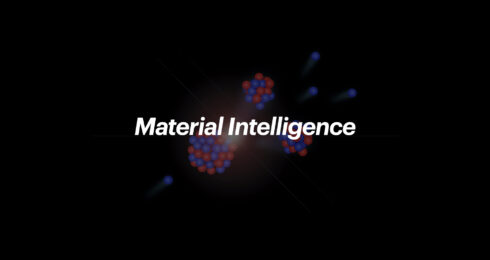Image source: Prof. Lukas Chrostowski.
On September 2, Lukas Chrostowski and colleagues presented their work to develop a powerful and low-cost sensor platform technology based on silicon chips that could one day be deployed for on-the-go diagnostic testing for coronavirus—and future novel diseases—to an audience that included UBC President and Vice-Chancellor, Santa Ono, as well as Prime Minister Justin Trudeau and Digital Government Minister Joyce Murray. The presentation was part of a UBC roundtable with the Government of Canada on developments in diagnostic tools and personal protective equipment.
Chrostowski, Professor in the Department of Electrical and Computer Engineering (ECE), partnered with long-time research collaborator Karen Cheung, Professor in the School of Biomedical Engineering and ECE, as well as industry partner EcoScreen, to develop the sensor. Much of the work has taken place at the Stewart Blusson Quantum Matter Institute (Blusson QMI), especially in the nanofabrication space inside the new clean room. The sensor is currently still in development as the team validates the chemistry for the biosensor and continues work on the chip.
“The short version of the story is that the pandemic hit, we invented something, and we got our teams back to work,” said Chrostowski. “We could not have adapted so quickly if not for the facilities at Blusson QMI and the expertise of our incredible team.”
From quantum materials to silicon photonics
When the labs at Blusson QMI were shut down in mid-March, a team of highly skilled researchers, technicians, and trainees were sent home, with many of their projects put on hold. As new information about the novel coronavirus became available, and as the shutdown lasted weeks and then months longer than anyone originally anticipated, necessity begat invention.
Soon, with an exemption from the University, Lukas Chrostowski and colleagues were able to return to the lab and get to work to build, test, and implement an efficient, ultra-low-cost screening tool that, when it is ready, would enable on-the-go diagnostic testing for coronavirus and future novel diseases based on silicon photonics and microfluidics technology the team was already adept at working with.
“It’s essentially a side-project of a quantum devices effort; there are commonalities with quantum materials, and the technical expertise required for quantum devices engineering is the same,” said Chrostowski.
“We prototype the chips at UBC, but ultimately these chips can be manufactured at low cost, in quantities of millions, by CMOS electronics foundries around the world,” said Chrostowski.
Chrostowski and Cheung were uniquely positioned to adapt to the demands of the pandemic as they had been working together to develop silicon sensors for antibodies for almost a decade. Together, they have published 28 papers. Their work took on a heightened urgency in March, when they began working with Vancouver-based EcoScreen to apply their sensors for COVID-19 chemistry.
Existing diagnostic technology is cumbersome and expensive, and requires a laboratory instrument to read screening chips, which can cost tens of thousands of dollars.
“Our system will give the reduction in cost and size that will make it possible to give the rapid, real-time information that will feed into EcoScreen’s digital risk assurance data platform,” said Cheung.
In April, the team filed a provisional patent that can put the entire instrument inside the chip with an end goal of developing disposable sensors that cost about $20, can diagnose many different diseases and several mutations, and connect to a smart-phone.
Canadian innovation and expertise
By creating a cheaper, more efficient test, as well as a secure data storage infrastructure, the team hopes to improve access to coronavirus screening and access to critical public health data to help Canadians resume in-person work, learning, and events, and improve Canada’s ability to respond to future urgent public health emergencies.
Chrostowski and Cheung are supported in this project by Canada’s Digital Technology Supercluster and SiEPICfab, an NSERC-funded industry consortium. They are joined by a team of more than fifteen members involved in fabrication at Blusson QMI, using subwavelength materials manufacturing equipment funded by the Canada Foundation for Innovation.
“This is truly a made-in-Canada effort, and none of it would be possible without access to the brilliant minds and leading-edge technology available to us at UBC and Blusson QMI,” said Chrostowski.


